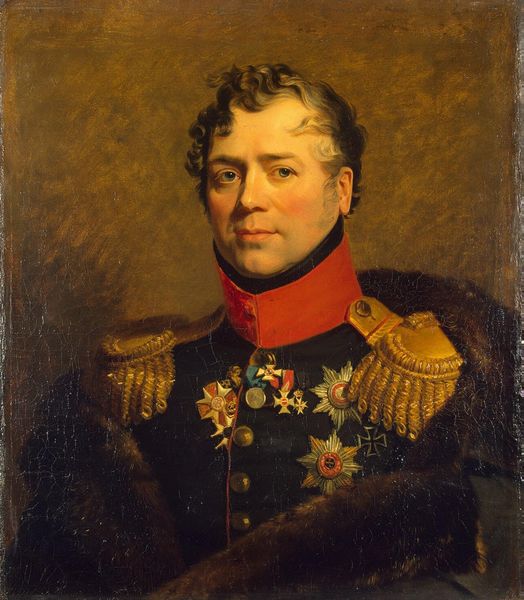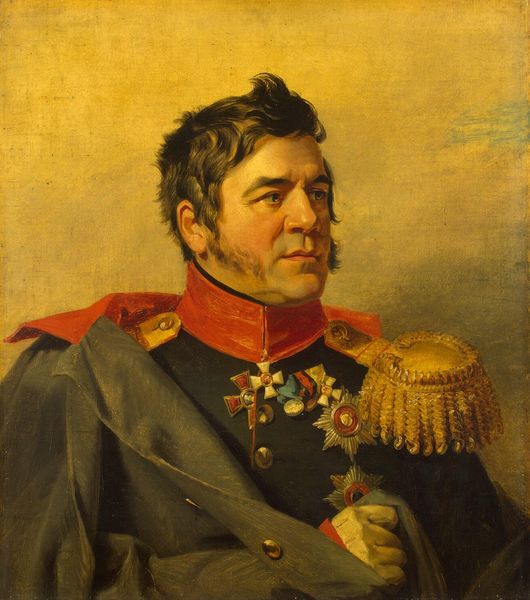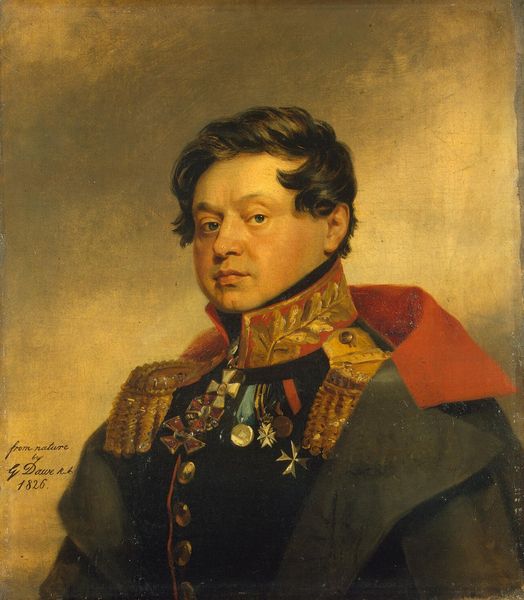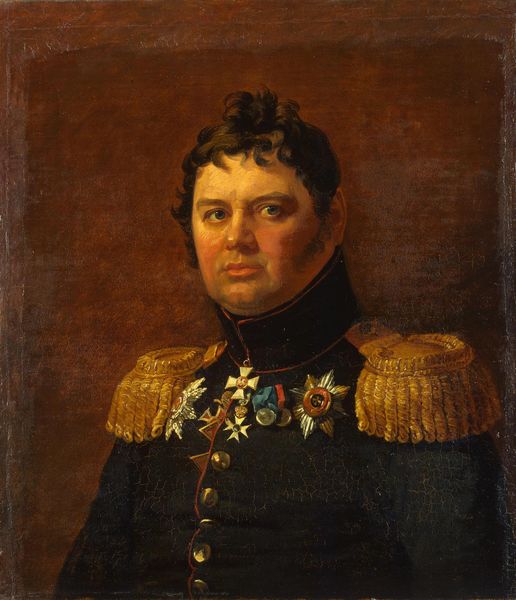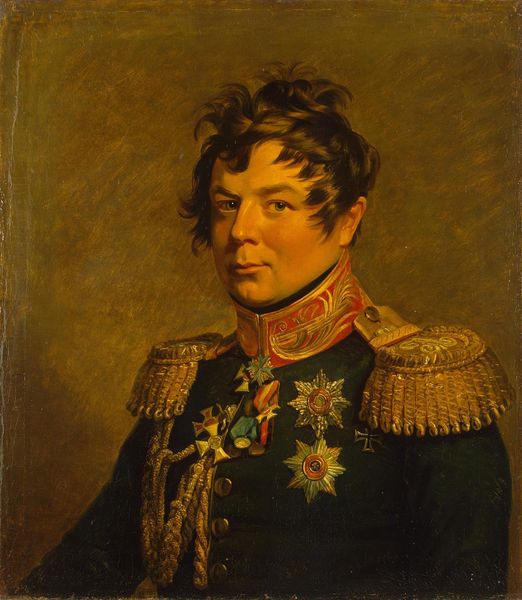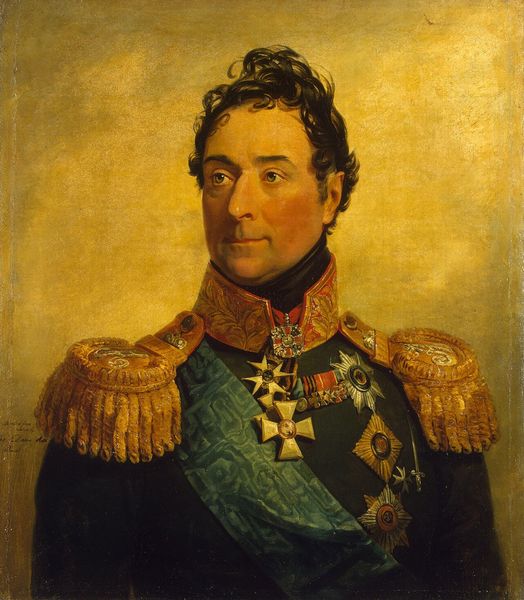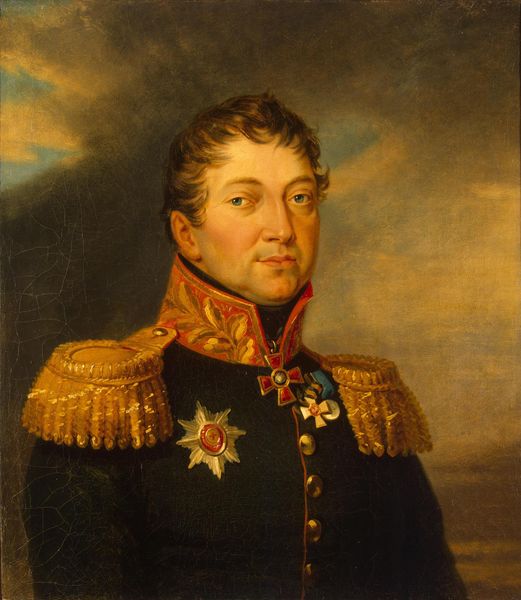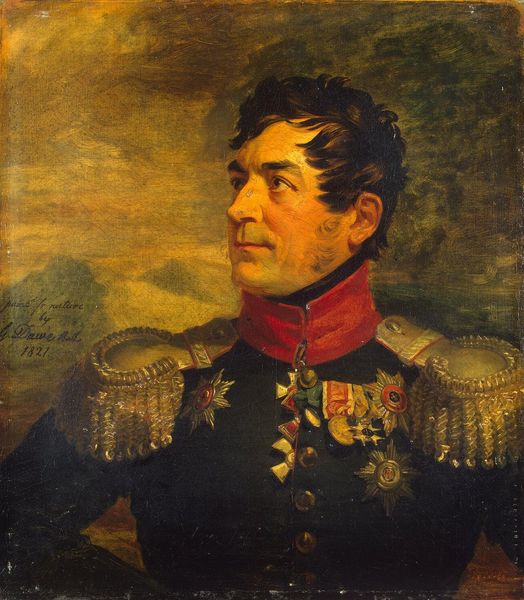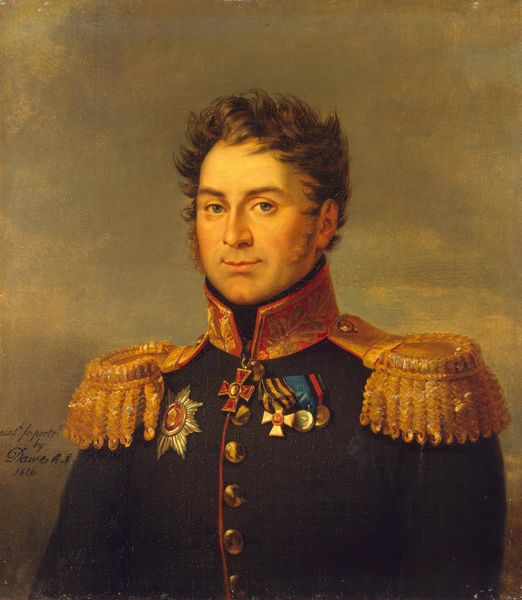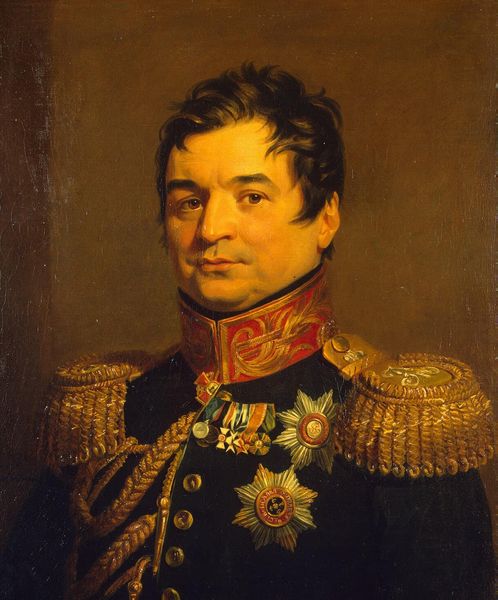
#
portrait
#
portrait reference
#
portrait head and shoulder
#
animal portrait
#
animal drawing portrait
#
portrait drawing
#
facial portrait
#
portrait art
#
fine art portrait
#
digital portrait
Copyright: Public domain
Editor: Here we have a portrait of Wasily Danilovich Laptev, a Russian General, by George Dawe. What strikes me most is the weight of those medals on his chest; they hint at a life lived in service, but also a system of power. How do you interpret this work? Curator: Indeed. These portraits are never *just* portraits. Dawe, an English artist, painted hundreds of these generals after the Napoleonic Wars for the Tsar. We have to ask ourselves, what purpose do they serve? It’s a visual assertion of Russian power and a form of imperial propaganda. Think about the social implications: who is being celebrated and what narratives are being reinforced? Does it glorify war? Does it reflect something else entirely? Editor: So it's less about the individual and more about the representation of power? Curator: Precisely. Consider the composition: the general gazes off to the side, seemingly towards the future of the Russian Empire. And what does it mean to have a British artist immortalizing Russian military figures? It is a postcolonial world where national and cultural identities are intertwined. We must always examine who is doing the telling, and from what perspective. Editor: That makes me see the portrait in a totally different way. I hadn’t considered the artist's role and the power dynamics at play. Curator: It’s crucial to think critically about these visual displays and the social contexts that birthed them. It is a celebration but perhaps something more sinister at its heart. Editor: Definitely something to think about next time I'm wandering in an art gallery! Thanks!
Comments
No comments
Be the first to comment and join the conversation on the ultimate creative platform.
